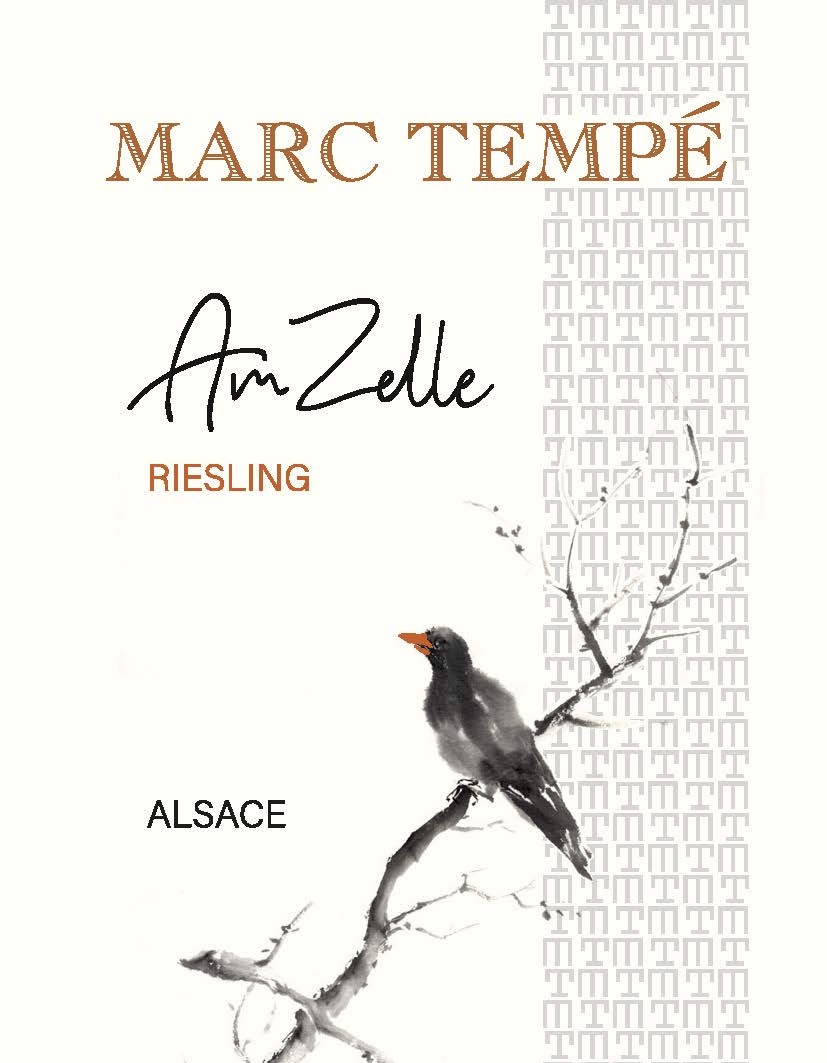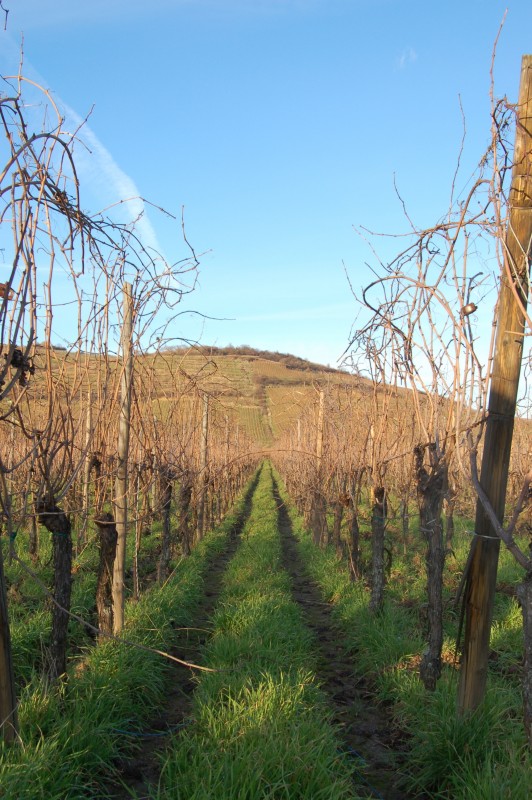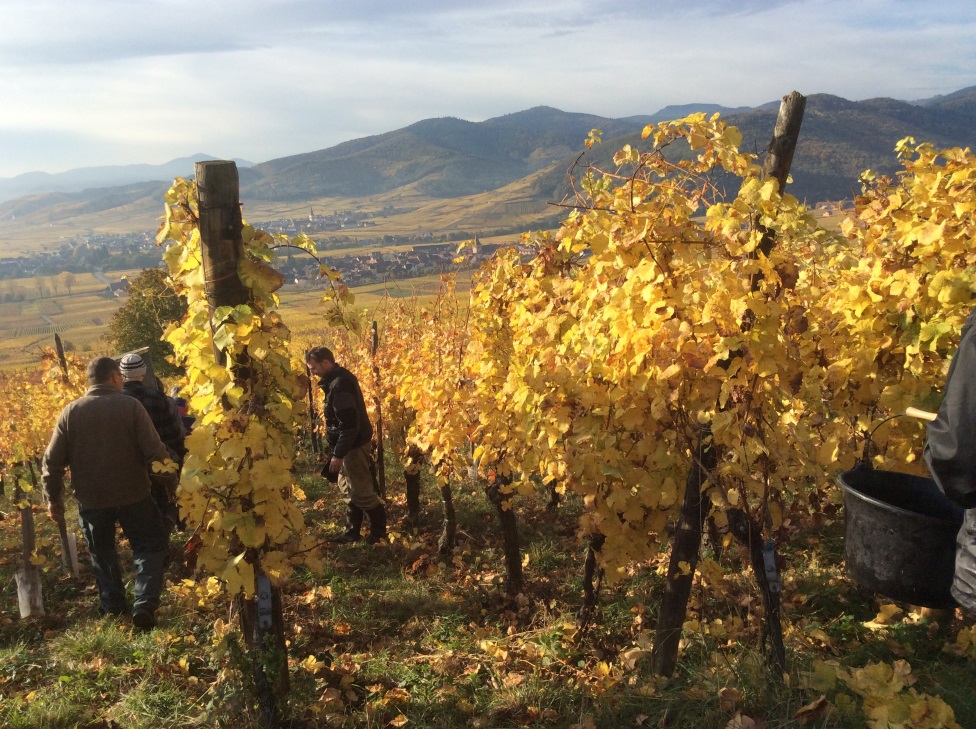Domaine Marc Tempé, Haut Rhin

| Country & Region | France, Alsace, Haut Rhin |
| Appellation(s) | Alsace |
| Producer | Marc and Anne-Marie Tempé |
| Founded | 1993 |
| Website | www.marctempe.fr |
T he wines [Tempé’s] are unusually concentrated and individualistic, often with well-integrated residual sweetness and supremely textural, yet they have much energy and drive.
—Anne Krebiehl, MW, Vinous Media, April 2024
This [AmZelle] full-bodied, balanced Riesling is refined and elegant on the palate and develops an intense, salty finish with finely tart citrus notes, which is carried by delicate tannins. From here it is not very far to his complex Grands Crus from the Schoenenbourg and the Mambourg, which are among the great dry Rieslings in the world.
—Stephen Reinhardt, Frankfurter Allgemeine, August 2022
Marc Tempé farms his vineyards biodynamically, ferments with indigenous yeasts in either cask or foudre and ages everything a minimum of twenty-four months in his cold cellars prior to bottling, making these quite old school wines of impressive precision and mineral signature. All of his wines are beautiful.
—John Gilman, View from the Cellar, July-August 2021
Of all our growers, Marc Tempé is the most idiosyncratic. The man marches to no drummer but his own, and he does so with blissful confidence devoid of arrogance. He doesn’t care what you or I think, and he doesn’t care about money; he cares about making really good, pure wine that really reflects its little piece of ground. Powerfully built (he’s called The Bear by at least one little boy in Colmar), hard working, he is also indefatigably upbeat, a quality that has shone steadfastly from the first day I met him in 1997.

He started his journey as a lab technician for the INAO, the body that governs France’s appellation system. He then stepped outdoors to become a vineyard expert for the same body, responsible for selecting lieux-dits (place names or single-vineyards) for possible inclusion into Alsace’s new grand cru system. In 1993 he started Domaine Marc Tempé with his wife Anne-Marie, from parcels inherited from both of their families. They immediately began the conversion to biodynamic farming, and 1995 became their first commercial release. In 1999, Léonard Humbrecht, the patriarch of Domaine Zind-Humbrecht, called Marc his “spiritual godson” in La Revue du Vin (note, with all due respect to Z-H, that Marc’s wines don’t tend to carry the same price tag).

Today the domaine comprises nearly 20 acres in the Haut Rhin radiating from the village of Zellenberg. The vines are pruned severely for low yields, harvested by hand, and pressed very slowly and carefully in order to retain acid and keep the pH as low as possible (the length of the pressing is determined by the type of grapes and their maturity, rather than by the simple calculus of weight + time = formulaic result). The grapes are never chaptalized; the must is never acidified; and laboratory yeast is never introduced. The wines are made either in old foudres (huge casks) or older Burgundy barrels (mostly obtained from Domaine Laflaive, a fellow biodynamic grower, and their use is dictated by the varietals— Pinot Gris, for example, does well in these smaller vessels—or by the small size of a given parcel). Fermentations take place at a very slow rate in two old, humid cellars he uses in Zellenberg, and the wines rest on their lees for a minimum of 24 months. This is something that no business plan would sanction but which, Marc is convinced, serves to emphasize a wine’s minerality and terroir. At bottling there is no fining and only a deft use of sulfur. Some wines, particularly the lieux-dits and grand crus, are bottled without filtration.

These are later harvest wines that are richly nuanced and complex, filled with unctuous orchard fruits, and flat-out delicious. If you like hedonistic wines with an intellectual bent, Tempé would be your man.
FYI, as of 2022 according to Alsace’s syndicate the CIVA, of the 4,000-odd grape growers in Alsace, 48% are members of co-ops and 35% sell wine in bulk, leaving independent wineries at only 17%.
A video of Marc Tempé and the ’21 harvest is here
The Wines
| Wine | Blend | Description |
|---|---|---|
| AmZelle Pinot Blanc | 2/3 Pinot Blanc, 1/3 Auxerrois | From 9 parcels of old vines totaling 2.10 acres growing on the flanks of Zellenberg’s hills. Made in foudre. |
| AmZelle Pinot Gris | Pinot Gris | From 7 parcels totaling 1.75 acres growing on the Zellenberg hillsides. Rich, honeyed, and focused. Made in foudre. Tech sheet here. |
| AmZelle Gewurztraminer | Gewurztraminer | From 6 parcels totaling 1.75 acres and averaging 50-years-old. Intensely aromatic with great depth, delineation, and definition. Made in foudre. |
| Rodelsberg | 2/3 Gewurztraminer, 1/3 Pinot Gris | Marc’s father planted this tiny parcel—amounting to one third of an acre—in the 1950s. The vines grow on top of the Mambourg spur, on the arid, wind-swept plateau that is the upper limit for grape growing in Alsace. The soil is meager, flush with iron oxides, and this harsh environment combined with the old vines make for a particularly concentrated wine. The vines ripen together, and the grapes are co-fermented. Made in older demi-muids. |
| Riesling Mambourg Grand Cru | Riesling | From vines planted in 1952, this is a rarity both because the parcel is only a half acre in size and because Riesling constitutes perhaps five percent of this grand cru’s total plantings (it’s known for Gewurztraminer and Pinot Gris). Mambourg is one of Alsace’s warmest grand crus and among its steepest and oldest (noted in the written record as far back as 783AD). Marc’s parcel is high on the hillside and produces an intensely mineral wine with superb length and finesse. Made in older barrels. |
| Gewurztraminer Mambourg Grand Cru | Gewurztraminer | Marc farms seven parcels of Gewurzt on this steep flank, totaling 1.14 acres. The parcels were planted at various times between 1930 and 1977. Depending on the year and parcel, they end up producing dry wines or vendange tardive or—especially the 1930 parcel—a sélection des grains nobles. The dry wine is as intensely floral as it is mineral, and full of rich, long, exotic fruit that is balanced by superb acidity—something that this variety all too often lacks. Made in foudre. |
| Pinot Gris Schoenenbourg Grand Cru | Pinot Gris | From 1 parcel less than half an acre. Schoenenbourg grows on the rump of a long plateau stretching above the village of Riquewhir and ending at Zellenberg. Soils here are limestone with a good amount of clay, making for a wine of great weight but also great elegance. This is always among the most complete of Marc’s wines. Made in foudre. |